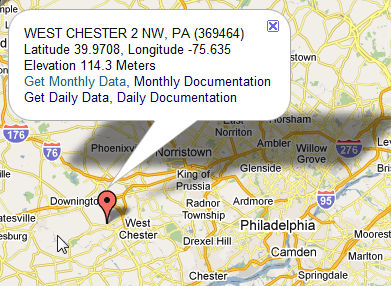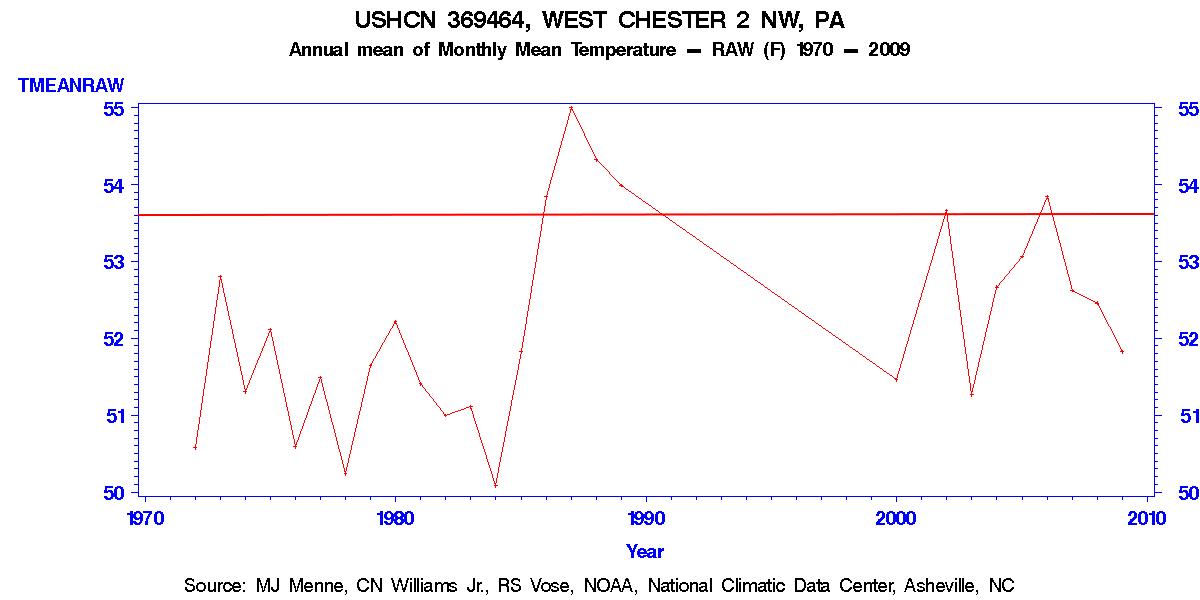The red horizontal line above shows the mean annual temperature for Philadelphia during the years prior to 1819. As you can see, temperatures over the last 40 years have been much cooler than they were 200 years ago.
Disrupting the Borg is expensive and time consuming!
Google Search
-
Recent Posts
- New Visitech Features
- Ice-Free Arctic By 2014
- Debt-Free US Treasury Forecast
- Analyzing Big City Crime (Part 2)
- Analyzing Big City Crime
- UK Migration Caused By Global Warming
- Climate Attribution In Greece
- “Brown: ’50 days to save world'”
- The Catastrophic Influence of Bovine Methane Emissions on Extraterrestrial Climate Patterns
- Posting On X
- Seventeen Years Of Fun
- The Importance Of Good Tools
- Temperature Shifts At Blue Hill, MA
- CO2²
- Time Of Observation Bias
- Climate Scamming For Profit
- Climate Scamming For Profit
- Back To The Future
- “records going back to 1961”
- Analyzing Rainfall At Asheville
- Historical Weather Analysis With Visitech
- “American Summers Are Starting to Feel Like Winter”
- Joker And Midnight Toker
- Cheering Crowds
- Understanding Flood Mechanisms
Recent Comments
- conrad ziefle on New Visitech Features
- Disillusioned on Ice-Free Arctic By 2014
- John Francis on Ice-Free Arctic By 2014
- arn on Ice-Free Arctic By 2014
- conrad ziefle on Ice-Free Arctic By 2014
- Reid on New Visitech Features
- arn on Ice-Free Arctic By 2014
- conrad ziefle on Ice-Free Arctic By 2014
- Disillusioned on Ice-Free Arctic By 2014
- Bob G on Ice-Free Arctic By 2014






Yeah, but the 1819 figures don’t have Hansen’s downward adjustment
lol, poor Philly, city of brotherly love gets no warmth.
I have no doubt, that by the time all these err, evil anomalous temperatures are “homogenised” they will show that either Philadelphia has been transported to Northern Europe by aliens or that Philadelphia is really basking in the Maui sun and the residents of Philadelphia were too stupid to notice.
The alarmists will scream that you should compare Westchester to Westchester not Westchester to Philly.
It is the closest USHCN station to Philly. The historic records are from Philly.
they are also nearer than Hansen’s 1200km limit so for GISS one’s trend is obviously the other’s